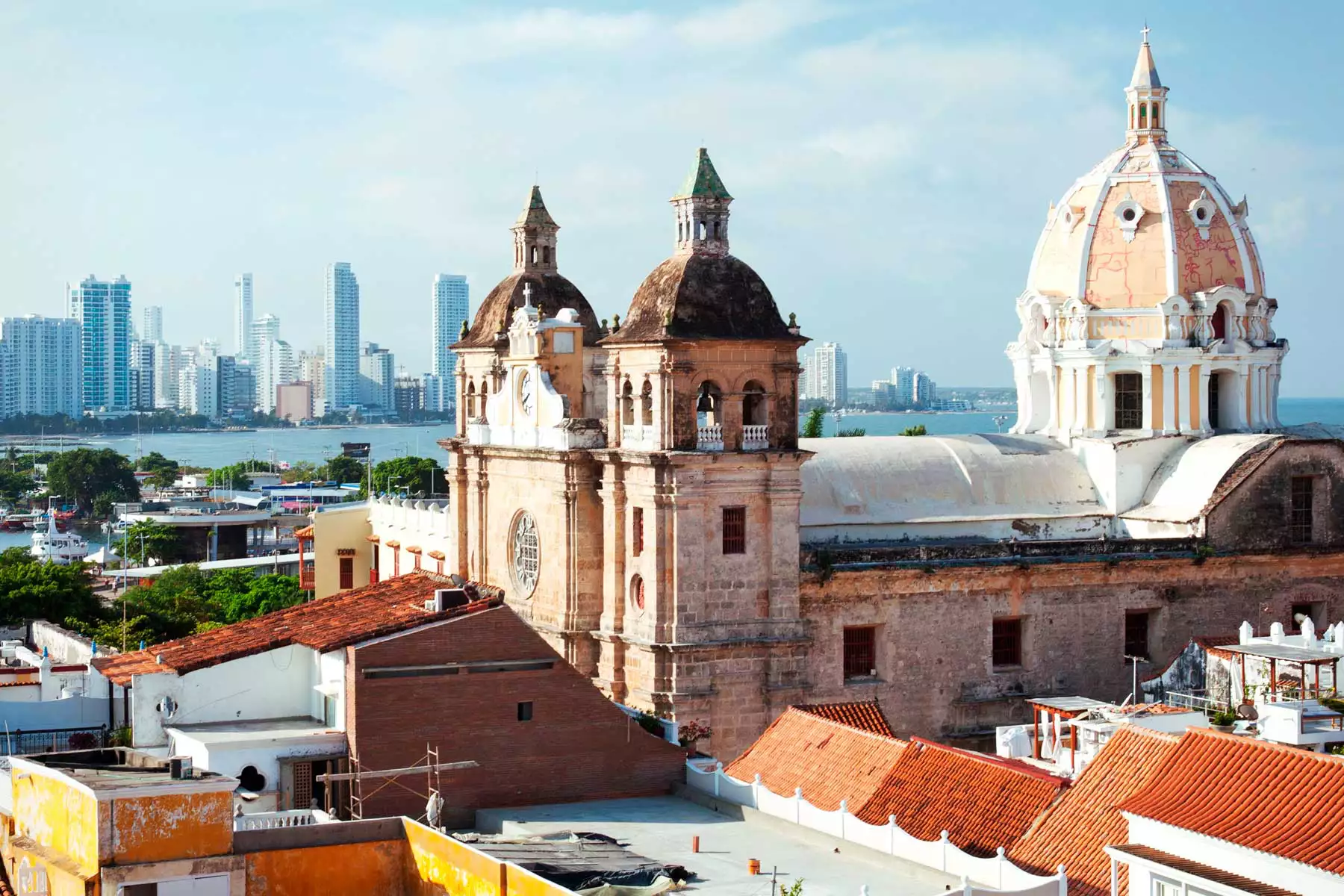Summary
Following the footsteps of Gabriel García Márquez
Growing up in Bogotá, I would visit Cartagena often, but I returned as an adult for the first time in 2018. My debut novel, Fruit of the Drunken Tree, is set in Colombia, and after the very last event of a six-month U.S. tour, I called a car to take me to the airport.
You’d have thought I’d want to sleep after eight hours of transit. However, after checking in to my hotel, I put on my bikini, winced through the hot sand, and walked into the warm Caribbean. There is no water like it: that roaring mass of cerulean, a color so deep and bright as to be nearly hallucinatory. Wading until I was chest-deep, I indulged in my favorite beach activity. I tipped back into the lull of waves until I was horizontal and began the minimal work of staying afloat.
Exploring the City of Cartagena
Cartagena is synonymous in my mind with Gabriel García Márquez — or “Gabo,” as he’s known to all Colombians. He lived there when he worked as a newspaperman in the late 1940s, his reportage highlighting the seedy, tropical, magical undercurrents of the country’s Caribbean coast. As the story goes, Gabo would sit in one of the many public plazas when he was looking for an idea, biding his time until something interesting took place. He wrote about an organ player’s monkey, a woman asking for abortive medicine, and the song of a macaw. Much has changed since that time; Cartagena now boasts more than a dozen upscale hotels, yet the public plazas still teem with high drama and vibrant life.
One night, I wandered around Ciudad Amurallada, the colonial part of the city that’s fully enclosed by the coral-stone walls of the old Castillo de San Felipe fortress. In front of the clock tower at Plaza de los Coches, a boxing stage had been erected where there had been a traditional Afro-Colombian Mapalé dance performance the night before. I bought a beer from a young man with a cooler and proceeded to pick a side and cheer. The next day, when I returned on my way to a salsa club, a group of young Black men were drumming and singing old Cumbia songs. The music was so good, I stayed there instead.
Discovering Gabriel García Márquez’s Legacy
I did not plan to linger in the plaza, as Gabo did, or to follow him around the city. It was simply something that happened. Over the years, I’ve come to know a lot about him — even becoming somewhat of a fanatic. I’ve read many of his novels multiple times and own the English, Spanish, and illustrated versions of One Hundred Years of Solitude, his best-known work. His gorgeous long sentences and sheer imagination never fail to revive my senses, and I see myself and my family reflected in the characters populating his work. Thus, it felt natural to trace his footsteps.
My next stop was the former La Merced monastery on the campus of the University of Cartagena, which holds Gabo’s ashes. In a wide courtyard, a bust of the author is surrounded by greenery. I was told the ashes were buried beneath the column, and that is where I deposited the yellow carnations I had bought earlier at the market and poured a good serving of a 12-year-old rum, his spirit of choice, into the soil.
Outside the monastery, various men stood by typewriters set up on small tables. Handmade signs announced they could notarize certificates of rent, employment, and more. Another man had placed a single cell phone at the middle of a small wooden stool, charging people 100 pesos a minute to use it. This all seemed very Colombian, the nearness of the sacred and the mundane.

Cultural Experiences and Nightlife in Cartagena
It took me a while to find Gabo’s house, a peach-colored hacienda on Calle del Curato, within the walls of the old fort. The house isn’t open to the public; all there is to note is the white intercom, which true acolytes examine respectfully and dutifully photograph. Besides being aesthetically pleasing, possessing large square buttons that I could not resist caressing, it has a powerful metaphorical pull. This is an object through which people communicated with Gabo — one he must have touched.
Gabo used to take nightly strolls along the sea, on the walkway atop the fort wall, and smoke a cigarette. Therefore, I did the same, feeling the warm breeze on my face, before making my way to El Coro, the bar at the iconic Sofitel Legend Santa Clara, a repurposed 17th-century convent. Gabo had been a regular there once upon a time, so I asked the bartender what he would have had and was served a rum cocktail sweetened with maracuyá and a kick of ginger.
Sipping my drink, I listened to the live calypso band and, like a writer, happily observed the myriad little dramas taking place around me.
A version of this story first appeared in the August 2021 issue of GoTravelDaily under the headline Under a Spell.





